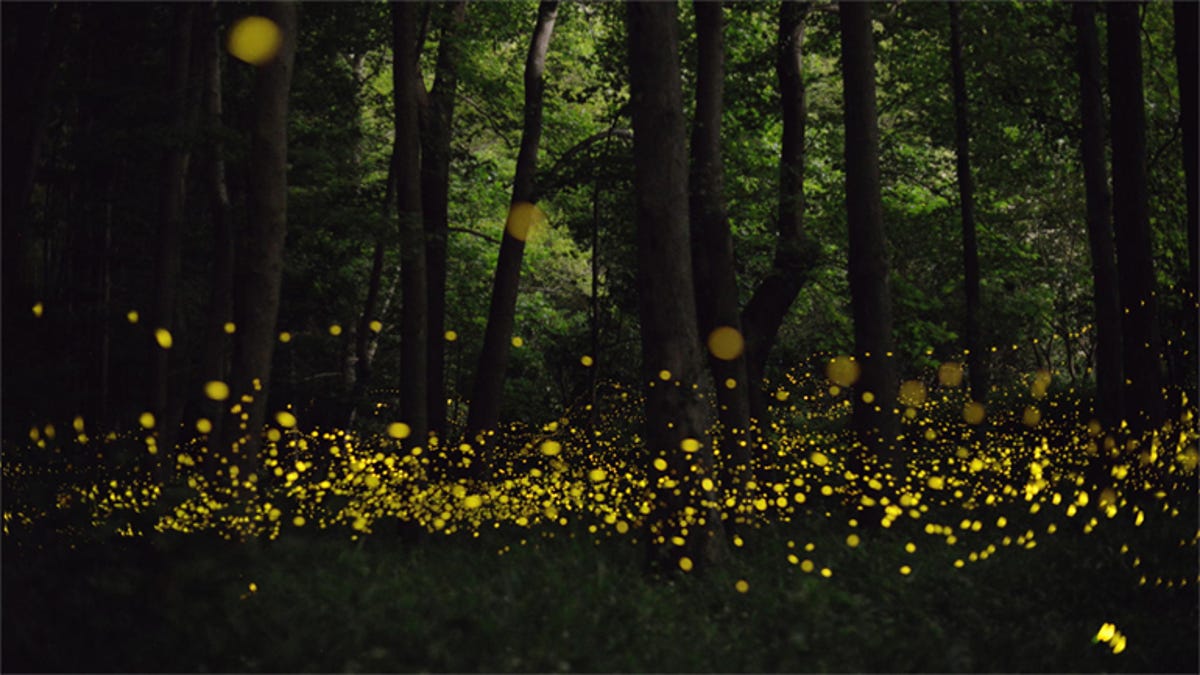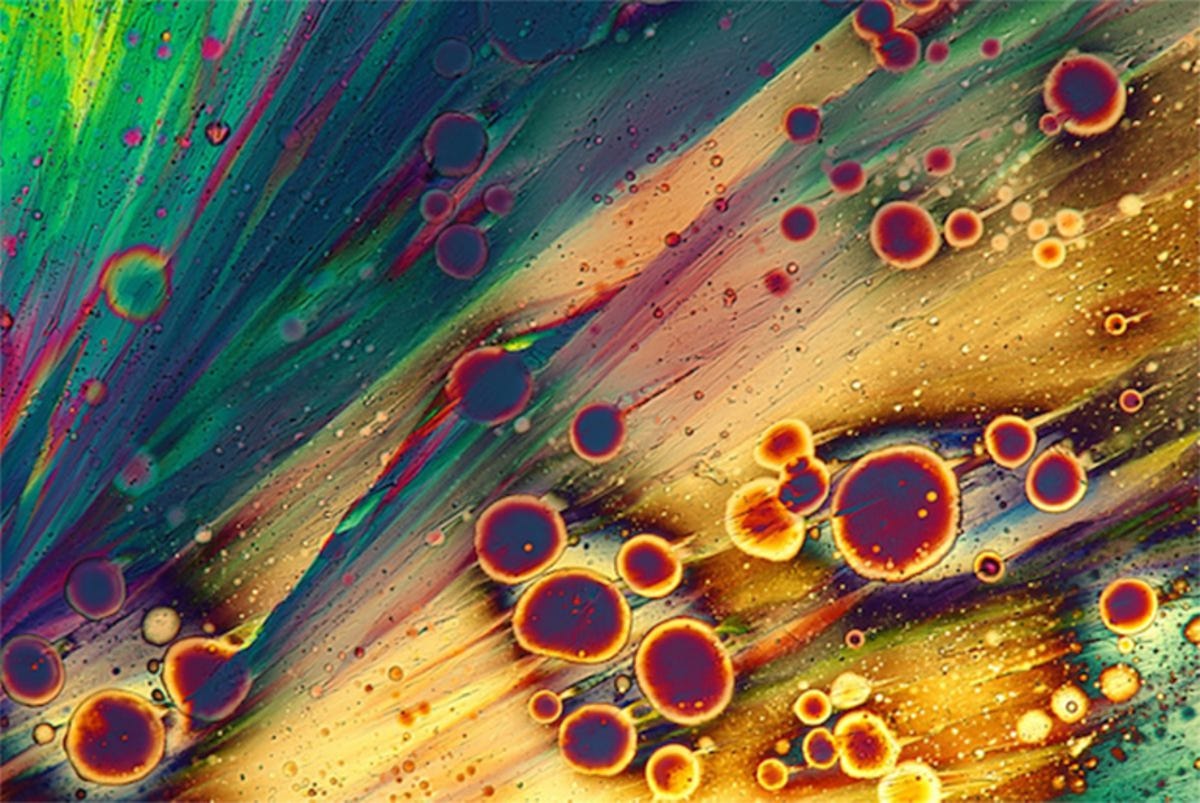The breathtaking art and science of light (pictures)
To celebrate the International Year of Light, Chandra X-Ray Centre is running an open-source exhibition showcasing Light: Beyond the Bulb.

Bioluminescent fireflies
This long-exposure photograph taken in a forest in Okoyama, Japan by photographer Tsuneaki Hiramatu showcases one of the best-known and beloved examples of bioluminescence -- fireflies. The glow is caused by a chemical reaction inside the insect's abdomen. An enzyme called luciferase and molecular oxygen oxidise a light emitting compound called luciferin, with adenosine triphosphate as an energy source, to create a glow in the 510-670-nanometer wavelength. This produces a yellow, green, or pale red glow.
This makes them quite lovely to look at, but the mechanisms behind the firefly glow have some uses in science as well.
Luciferases are often used as bioindicators for gene expression studies, and can also be used in medicine to detect blood clots, proteins and even cancerous cells. Some researchers are even experimenting with firefly luminescence to create electricity-free lighting.
Cow and rainbow
Most people know what causes a rainbow: Light enters miniscule droplets of water in the air. At the point of entry, the light is bent as it enters a thicker medium, where then light moves more slowly (called refraction). Then it is reflected off the back of the water droplet and bent again on the way out. Different colours are produced when the refraction occurs at slightly different angles, which results in the rainbow. Because, however, of the way light enters, bounces off and then exits the droplets, you'll only ever see a rainbow when the light source is behind you. Skeptical? Take a look at some photos.
X-ray light bulbs
We've all seen medical X-rays, and know -- at least on a very basic level -- how they work. The subject is placed between an X-ray detector and an X-ray source. Pulses of X-ray -- a form of electromagnetic radiation able to pass through materials that absorb visible light -- are then sent through the subject. Because materials with higher atomic mass -- in the case of bone, calcium -- absorb X-rays better, the image taken by the detector clearly shows the subject's bones. In this series, artist Dr Paula Fontaine has X-rayed light bulbs, adding the colour afterward for artistic effect.
Observatory laser
Astronomical observatories need to be in isolated locations, in order to minimise light pollution. Often, these giant telescopes are trying to capture images of objects hundreds or thousands of light-years away; so you might think shining a laser into the sky counter-intuitive. On the contrary, the laser -- a tightly focused beam of light -- allows astronomers to compensate for any blurring caused by the Earth's atmosphere.
The beam is shot into the sky, where it excited a layer of sodium atoms at an altitude of 90 kilometres, just below the Karman line. This creates an artificial star within the Earth's atmosphere; this star is then used as a reference point for an array of computer-controlled deformable mirrors, which are adjusted hundreds of times per second to correct atmospheric distortion.
Salt Lake City from space
From aboard the ISS, the Earth at night glitters and glows with the light of human habitation. This is, technically, light pollution; but it's spectacularly beautiful. All the lights of a city -- homes, businesses, streetlights, the cars on the road; incandescent bulbs, which burn a filament, fluorescent, which burn a gas, LED -- all combine to indicate a planet alive and crawling with life.
UV Sun
There she is -- our magnificent sun -- our planet's main source of light and warmth, without which life would simply be unable to exist. It gives off much more than visible light, and some of that data is now available to us, thanks to NASA's Solar Dynamics Observatory, a telescope that can image the sun in a variety of different wavelengths. This image shows the sun in the extreme ultraviolet wavelength, with the reds showing cooler temperatures -- about 60,000 degrees Kelvin (107,540 F) -- and blues and greens showing temperatures of 1 million degrees Kelvin (1,799,540 F) or greater.

Polarisation
This rather stunning looking collection of colours... well, it's probably less interesting than it looks. It's a photomicrograph -- a photograph taken using a microscope, by photographer Marek Mis -- of a decongestant drug called Acatar and a common food additive called sodium citrate, taken in polarised light. Normally, light vibrations can travel in all directions. Polarisation is the technique whereby some directions are blocked, restricting the vibrations to a single plane. This can be used in photomicrography to highlight certain details.
Volvox under the microscope
This rather geometric looking structure is actually a type of green algae called volvox -- which forms spherical colonies made up of perfectly placed flagellate cells in the surface of a hollow sphere. These cells coordinate their swimming, as indicated by their eyespots and posterior and anterior positions. When viewed under an optical microscope -- also known as a "light microscope", a type of microscope that uses light and lenses to magnify tiny samples -- the details of this matrix spring into clarity, as seen in this image by Frank Fox. The green sphere on the right is a "daughter" colony, growing on the surface of an older colony. Eventually the parent colony will disintegrate, giving "birth" to the younger colony.
Earth, as time goes by
Timelapse photos are a great way to capture aggregate information. They involve leaving the lens of a camera open for a longer-than-usual amount of time; this captures not a snapshot of a single moment, but the paths light travels as it moves. This timelapse of the Earth, taken from the ISS by NASA astronaut Done Petit, shows several types of light: star trails in the sky; lightning (the bright flashes); aurora; and, of course, the electric light created by human cities.
The heart of the Milky Way
At the heart of the Milky Way galaxy -- astronomers believe -- is probably a supermassive black hole. It's hard to tell, not just because of the clouds of dust and matter that surround our galaxy's core, but because black holes absorb all light -- meaning we can only really find out information about them by observing their effect on the space and objects around them.
This image of the Milky Way's heart, released in 2009, is a composite comprising data from NASA's three great observatories, Chandra, Hubble and Spitzer. Chandra contributed X-ray data, visible in blue and violet, indicating gas heated to millions of degrees by stellar explosions and outflows from the black hole. Hubble contributed near-infrared data, visible in yellow, indicating high-energy regions where new stars are being born. Spitzer contributed infrared, visible in red, indicating glowing dust clouds created by solar radiation and wind.
The very bright blob on the right side of the image? That's the centre of the Milky Way galaxy, visible through the dust thanks to imaging technologies that are able to see beyond visible light.
You can visit the entire online exhibition on the Light: Beyond the Bulb website.

